Translations and other works
Through Thomas Cromwell's favour, Marshall obtained a license for printing books, and his main occupation from about 1534 seems to have been in preparing works for his press. At the period when he first began literary work, he was living in Wood Street, London. He was then translating Lorenzo Valla's undermining of the Donation of Constantine , and a work by Erasmus that appeared under the titles Maner and Forme of Confession or Erasmus of Confession. [1] [2]
Borrowing from Cromwell, Marshall published The Defence of Peace, on 27 July 1535. It was a translation of Marsilio of Padua's Defensor pacis , the 14th century work against the temporal power of the Pope. It was printed by Robert Wyer. In the same year appeared his Pyctures and Ymages, printed by John Gough, an English translation via Latin of Martin Bucer's Das einigerlei Bild. Lord Chancellor Thomas Audeley and Thomas Broke thought it too provocative. Cromwell, however, let it go ahead, with a noticeable reaction to its suggestions on burning images. [1] [2]
Marshall built up a reformist portfolio, with a translation by William Turner from Joachim Vadian, an English primer that presaged the Bishops' Book and Thomas Cranmer's Litany, [3] and a Flemish work on poor relief. The Defensor pacis, however, did not sell well. [2] In 1536, Marshall encountered money troubles, and a family problem as John Gostwick pursued a loan of his brother Thomas, parson at South Molton. Cromwell was unwilling to help as Gostwick was one of his closest friends, or give Marshall preferments stripped from Reginald Pole. [1]
In 1542 there appeared Marshall's An Abridgement of Sebastian Munster's Chronicle, printed by Wyer. Joseph Ames also attributed to Marshall the Chrysten Bysshop and Counterfayte Bysshop, n.d., printed by Gough. [1] The date of his death is unknown, but may be around 1540. [2]
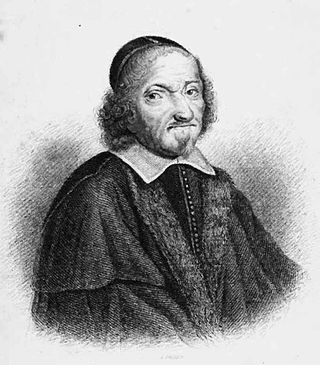
Myles Coverdale, first name also spelt Miles, was an English ecclesiastical reformer chiefly known as a Bible translator, preacher and, briefly, Bishop of Exeter (1551–1553). In 1535, Coverdale produced the first complete printed translation of the Bible into English. His theological development is a paradigm of the progress of the English Reformation from 1530 to 1552. By the time of his death, he had transitioned into an early Puritan, affiliated to Calvin, yet still advocating the teachings of Augustine.
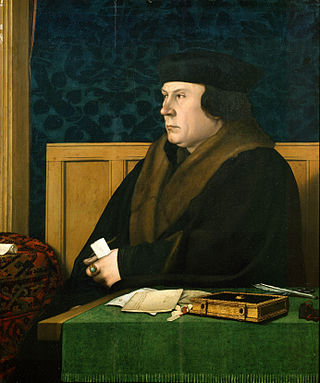
Thomas Cromwell, briefly Earl of Essex, was an English statesman and lawyer who served as chief minister to King Henry VIII from 1534 to 1540, when he was beheaded on orders of the king, who later blamed false charges for the execution.

Sir Thomas Elyot was an English diplomat and scholar. He is best known as one of the first proponents of the use of the English language for literary purposes.
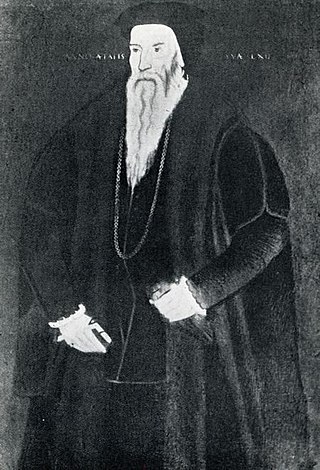
Sir John Seymour, Knight banneret was an English soldier and a courtier who served both Henry VII and Henry VIII. Born into a prominent gentry family, he is best known as the father of Henry VIII's third wife, Jane Seymour, and hence grandfather of king Edward VI of England.

Elizabeth Seymour was a younger daughter of Sir John Seymour of Wulfhall, Wiltshire and Margery Wentworth. Elizabeth and her sister Jane served in the household of Anne Boleyn, the second wife of Henry VIII. The Seymours rose to prominence after the king's attention turned to Jane. In May 1536, Anne Boleyn was accused of treason and adultery, and subsequently executed. On 30 May 1536, eleven days after Anne's execution, Henry VIII and Jane were married. Elizabeth was not included in her sister's household during her brief reign, although she would serve two of Henry VIII's later wives, Anne of Cleves and Catherine Howard. Jane died 24 October 1537, twelve days after giving birth to a healthy son, Edward VI.
Richard Taverner was an English author and religious reformer.
Walter Hungerford, 1st Baron Hungerford of Heytesbury, was created Baron Hungerford of Heytesbury in 1536.

John Gough Nichols (1806–1873) was an English painter and antiquary, the third generation in a family publishing business with strong connection to learned antiquarianism.
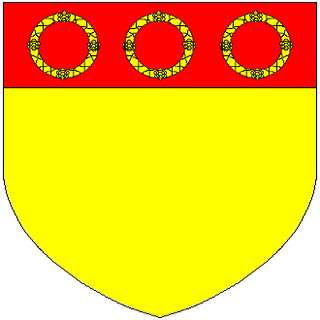
Sir Richard Morrison was an English humanist scholar and diplomat. He was a protégé of Thomas Cromwell, propagandist for Henry VIII, and then ambassador to the German court of Charles V for Edward VI.
John Hilsey was an English Dominican, prior provincial of his order, then an agent of Henry VIII and the English Reformation, and Bishop of Rochester.
Richard Whitford was a 16th century English Catholic priest known as an author of many devotional works.
Thomas Gerard (1500?–1540) was an English Protestant reformer. In 1540, he was burnt to death for heresy, along with William Jerome and Robert Barnes.

Richard Sherry was an English schoolteacher and author.
Edward Lee was Archbishop of York from 1531 until his death.
Richard Marshall D.D. was an English clergyman and academic administrator at the University of Oxford.
Sir John Gostwick was an English courtier, administrator and MP.
John Walton, also John Capellanus was an English Augustinian canon, known as a poet and translator.
Robert Pakington was a London merchant and Member of Parliament. He was murdered with a handgun in London in 1536, likely the first such killing in the city. His murder was later interpreted as martyrdom, and recounted in John Foxe's Acts and Monuments. He was the grandfather of Queen Elizabeth I's favourite, Sir John "Lusty" Pakington.
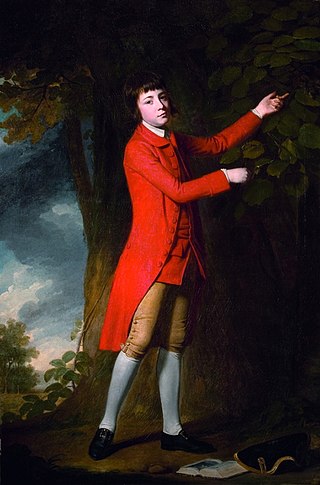
Thomas Rackett (1757–1840) was an English clergyman, known as an antiquary.
William Thynne was an English courtier and editor of Geoffrey Chaucer's works.
This page is based on this
Wikipedia article Text is available under the
CC BY-SA 4.0 license; additional terms may apply.
Images, videos and audio are available under their respective licenses.
![]() This article incorporates text from a publication now in the public domain : Lee, Sidney, ed. (1893). "Marshall, William (fl.1535)". Dictionary of National Biography . Vol. 36. London: Smith, Elder & Co.
This article incorporates text from a publication now in the public domain : Lee, Sidney, ed. (1893). "Marshall, William (fl.1535)". Dictionary of National Biography . Vol. 36. London: Smith, Elder & Co.







